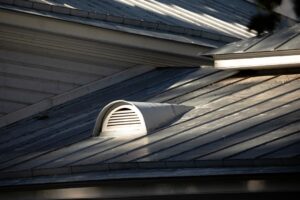Essential TPO Roof Maintenance Guide
Thermoplastic Polyolefin (TPO) roofs deliver exceptional energy efficiency and durability, yet even the most robust membrane can suffer costly failures without consistent upkeep. In this guide, you will discover what makes TPO unique, how often to inspect it, best cleaning and repair methods, and the impact of maintenance on warranty and energy savings. By following proven TPO roofing care best practices, homeowners safeguard against leaks, extend roof lifespan, and preserve warranty coverage—all supported by expert services from Gomez Roofing. This article covers:
- Defining TPO roofing and its maintenance needs
- Inspection frequency and key inspection points
- Cleaning protocols, seam care, drainage, UV protection
- Common issues, repair options, and cost expectations
- Lifespan extension, warranty preservation, and eco-benefits
- How Gomez Roofing delivers professional TPO maintenance
- Cost-benefit analysis of proactive roof care
Understanding these themes equips property managers and homeowners to protect their investment and reduce long-term expenses.
What Is TPO Roofing and Why Does It Require Regular Maintenance?
TPO roofing is a single-ply membrane composed of thermoplastic polyolefin that reflects UV rays and resists chemicals, providing energy savings and weatherproof protection. Because seams, flashings, and membrane surfaces face constant thermal cycling and debris buildup, scheduled maintenance prevents minor defects from escalating into leaks or membrane failures, ensuring long-term performance and warranty compliance.
TPO Roofing: Benefits and Maintenance
TPO roofing is a popular choice for commercial buildings due to its durability, energy efficiency, and cost-effectiveness. Regular inspections and maintenance are crucial for extending the roof’s lifespan and ensuring it continues to perform its protective functions effectively.
This source highlights the importance of regular maintenance for TPO roofs, which aligns with the article’s emphasis on the same topic.
What Are the Key Features and Benefits of TPO Roofing?
Below is an overview of core TPO characteristics mapped to their homeowner advantages:
| Feature | Benefit | Why It Matters |
|---|---|---|
| High Reflectivity | Reduces cooling loads by up to 15% | Enhances energy efficiency and lowers HVAC bills |
| Heat-Welded Seams | Seam integrity under thermal stress | Prevents water intrusion and minimizes leak risk |
| Chemical Resistance | Withstands ponding water and oils | Protects membrane from degradation in commercial or industrial settings |
| Lightweight | Easier installation and retrofits | Reduces structural load on existing buildings |
TPO’s combination of reflectivity and seam technology underpins its popularity. Exploring how it stacks up against alternatives informs the right roof system choice.
How Does TPO Compare to Other Roofing Systems Like PVC and EPDM?
| System | Reflectivity | Average Installation Cost per Square Foot |
|---|---|---|
| TPO | High (0.70+) | $4.50–$8.00 |
| PVC | High (0.65+) | $6.00–$9.50 |
| EPDM | Low (0.25) | $3.50–$7.00 |
TPO’s superior reflectivity and competitive pricing promote energy savings, while its heat-welded seams offer durability advantages. Evaluating environmental conditions and budget constraints leads to the factors outlined next.
What Factors Affect the Lifespan and Durability of TPO Roofs?
A TPO roof’s longevity hinges on several interrelated elements:
- Membrane thickness and scrim reinforcement determine tear resistance.
- Quality of seam welding influences water tightness under thermal expansion.
- Local climate—UV intensity, temperature swings, storm exposure—accelerates wear.
- Maintenance frequency prevents debris accumulation and seam separation.
These factors illustrate why a structured inspection schedule is essential for early detection and remediation of potential issues.
How Often Should You Perform TPO Roof Inspections and What Should You Look For?
Routine inspections identify emerging damage before it compromises the roof’s protective function. Conducting visual and technical assessments twice a year—ideally in spring and fall—and after severe weather ensures that gaps, punctures, or ponding water are addressed promptly.
What Is Included in a Comprehensive TPO Roof Inspection Checklist?
A complete TPO roof inspection covers key membrane and accessory components:
- Seams and flashings for splits, gaps, or loose welds
- Roof penetrations (vents, pipes) for secure seals
- Ponding water or debris accumulation near drains
- Membrane surface for punctures, blistering, or discoloration
- Drainage systems, scuppers, and gutters for clogs
Performing each check prevents small failures from evolving into major leaks and supports the next step of targeted repairs.
TPO Rooftop Inspection Checklist
Routine inspections, ideally twice a year, are essential for identifying and addressing potential issues on TPO roofs. A comprehensive checklist includes key membrane and accessory components like seams, flashings, and drainage systems.
This source provides a checklist for TPO roof inspections, which is relevant to the article’s discussion of inspection frequency and key inspection points.
How Do Seasonal and Post-Storm Inspections Protect Your Roof?
Seasonal reviews address cyclical stresses:
- Spring inspections remove winter debris and check freeze-thaw damage
- Summer checks evaluate UV degradation and thermal seam stress
- Post-storm assessments identify hail punctures, wind-lifted edges, and water intrusion
Aligning inspections with weather events ensures membrane resilience and prolongs service life by mitigating damage triggers.
What Tools and Techniques Are Used During TPO Roof Inspections?
Inspectors deploy specialized instruments to detect hidden defects:
- Seam probes to test weld strength and adhesion
- Infrared scanning to reveal moisture beneath the membrane
- High-resolution drone imagery for inaccessible areas
- Moisture meters to quantify water infiltration
- Detailed photographic logs to track condition over time
Using these methods uncovers subtle issues early, guiding efficient maintenance and repair strategies.
What Are the Best Practices for Cleaning and Maintaining Your TPO Roof?
Effective cleaning and maintenance enhance TPO performance by removing damaging contaminants and reinforcing protective features. For a detailed walkthrough of routine cleaning, seam care, and UV protection, consult Gomez Roofing’s Maintenance Tips for Long-Lasting TPO Roofs.
How Should You Effectively Remove Debris and Dirt from a TPO Roof?
Proper debris removal involves:
- Sweeping loose leaves and branches with a soft-bristled broom
- Flushing dirt with low-pressure water to avoid seam damage
- Clearing standing water with squeegees or roof vacuums
Maintaining a clean membrane surface prevents premature degradation and prepares the roof for thorough seam inspection.
Why Is Maintaining Seams and Flashings Critical for TPO Roof Integrity?
Seams and flashings form the primary water-tight barriers:
- Inspect heat-welded seams for uniform bonding without voids
- Reapply or replace flashing around penetrations using manufacturer-approved adhesives
- Seal perimeter edges to guard against wind-driven rain
Ensuring seam integrity maintains the continuous membrane that shields the building interior from moisture.
How Does Proper Drainage Maintenance Prevent Roof Damage?
Well-functioning drainage channels protect the membrane by:
- Clearing scuppers and downspouts of debris to allow free water flow
- Checking interior drains and overflow scuppers for blockages
- Installing strainers or leaf guards to reduce clog frequency
Effective water runoff avoids ponding that accelerates membrane wear and undermines insulating layers.
What Are the Recommended UV Protection and Weatherproofing Methods for TPO Roofs?
Protective measures against solar and climatic stress include:
- Applying reflective roof coatings every 3–5 years to restore reflectivity
- Using elastomeric sealants on seams and fastener terminations
- Scheduling periodic re-treatments based on manufacturer guidelines
These tactics slow UV-induced oxidation and support membrane flexibility under thermal cycling.
What Common Problems Affect TPO Roofs and How Can They Be Repaired?
Despite TPO’s durability, typical issues can arise from environmental stress and physical wear. Early identification ensures targeted repairs that restore performance without full-scale replacement.
How to Identify and Address Punctures, Blistering, and Shrinkage on TPO Roofs?
TPO membranes can exhibit:
- Punctures caused by foot traffic, hail, or fallen debris—patch with heat-welded TPO membrane squares
- Blistering where trapped moisture forms bubbles—drill weep holes, dry substrate, and seal with compatible primer
- Shrinkage leading to seam stress—trim loose edges and reinforce seams with welded patch
Promptly correcting these defects prevents water entry and preserves the roof assembly.
What Are Typical Costs Associated with TPO Roof Repairs?
Repair expenses vary by damage type and scope:
- Minor patches (≤1 sq ft): $250–$500
- Seam rewelding (per linear foot): $15–$25
- Sectional membrane replacement (per 10 sq ft): $1,000–$2,500
Investing in routine maintenance curbs these costs by reducing emergency repair frequency.
When Should You Call a Professional for TPO Roof Repair Services?
Engage certified technicians when you encounter:
- Multiple or large membrane tears exceeding 1 sq ft
- Significant seam failures or flashing separations
- Recurring leaks despite DIY patch attempts
Professional intervention ensures correct material selection, heat-weld quality, and full warranty compliance.
How Does Regular TPO Maintenance Extend Roof Lifespan and Preserve Warranty Coverage?
Proactive maintenance underpins both physical durability and contractual protection by keeping the roof aligned with manufacturer and warranty requirements. Regular inspections and documented service records support claims and prevent voidance.
What Are the Proven Benefits of Proactive TPO Roof Maintenance?
Consistent upkeep delivers measurable advantages:
- Extends membrane lifespan from 20 up to 30 years
- Sustains energy-efficient reflectivity for lower cooling loads
- Detects and corrects small defects before they require major repairs
- Upholds roof system warranty through compliance with care guidelines
These outcomes maximize return on investment and mitigate lifecycle costs.
How Long Does a TPO Roof Last?
A well-maintained TPO roof can last for 15 to 20 years, and sometimes even longer, up to 25 to 30 years. The lifespan depends on factors like climate, maintenance, and installation quality.
This source provides information on the average lifespan of TPO roofs, which is relevant to the article’s discussion of extending roof lifespan.
How Does Maintenance Impact Your TPO Roof Warranty and What Voids It?
Warranty remains valid when maintenance adheres to prescribed conditions:
- Used approved cleaning solutions and sealants
- Kept accurate service logs with dates and actions
- Avoided non-manufacturer patches or adhesives
Actions that can void coverage include DIY welds, neglecting inspections, and unapproved chemical exposure.
What Are the Environmental and Energy Savings Benefits of Maintaining a TPO Roof?
Well-maintained TPO supports sustainability by:
- Reflecting solar heat to reduce building cooling energy by up to 15%
- Prolonging roof life to minimize waste and replacement demand
- Facilitating membrane recycling at end-of-life through TPO’s thermoplastic properties
These eco-benefits reinforce the appeal of TPO as a green roofing choice.
How Can Gomez Roofing Help You Maintain and Protect Your TPO Roof?
Gomez Roofing combines industry expertise with licensed, bonded crews and a 10-year workmanship warranty to deliver reliable TPO maintenance that supports energy efficiency and leak prevention.
What Professional TPO Maintenance Services Does Gomez Roofing Offer?
Gomez Roofing’s service portfolio includes:
- Biannual and post-storm roof inspections
- Seam and flashing repairs using heat-welding technology
- Preventative maintenance plans with scheduled cleaning and coating
- Emergency leak response and temporary waterproofing
These offerings ensure comprehensive roof care aligned with owner expectations and warranty standards.
How Does Gomez Roofing Ensure Quality Workmanship and Customer Satisfaction?
Every project is backed by:
- Licensed, bonded, and insured roofing professionals
- 10-year workmanship warranty on new installations and repairs
- Detailed service reports and photographic documentation
- Responsive customer support and next-day free quotes
This commitment to excellence builds trust and reinforces long-term performance.
How Can You Get a Free Quote and Schedule TPO Roof Maintenance with Gomez Roofing?
To request a complimentary assessment:
- Visit the Gomez Roofing homepage and submit the online form.
- Call the local service line for a next-day inspection appointment.
- Receive a detailed estimate outlining recommended maintenance tasks and costs.
Seamless scheduling and transparent pricing support informed decision-making and prompt service delivery.
What Are the Cost-Benefit Advantages of Regular TPO Roof Maintenance?
Investing in routine maintenance yields tangible savings and operational stability by avoiding unplanned repairs and optimizing energy use.
Commercial TPO Roofing
TPO roofing systems offer excellent value for money, with relatively low installation costs and minimal maintenance requirements. Their long lifespan and energy-saving benefits make them a cost-effective roofing solution for commercial properties.
This source supports the article’s discussion of the cost-benefit advantages of TPO roof maintenance.
How Does Routine Maintenance Reduce Emergency Repair Expenses?
Proactive care lowers reactive costs through:
- Early detection of minor membrane tears that cost 70% less to fix than full patches
- Prevention of seam failures that can result in multi-thousand-dollar replacements
- Minimizing interior damage to insulation and ceiling finishes
This strategic approach controls roofing expenditures over the building’s lifecycle.
What Case Studies Demonstrate the Value of TPO Roof Upkeep?
A South Florida retail complex benefited from:
- A 30% reduction in annual repair calls after instituting biannual inspections
- Four years of sustained reflectivity following a scheduled coating program
- Zero emergency leaks during the past hurricane season
Real-world results validate the ROI of disciplined maintenance.
How Does Maintenance Improve Energy Efficiency and Lower Cooling Bills?
By keeping the reflective membrane clean and intact, regular servicing:
- Maintains surface temperatures up to 20°F cooler than unmaintained roofs
- Achieves an average payback period of two years through reduced HVAC operation
- Supports building sustainability goals and occupant comfort
Quantifiable energy savings underscore the dual financial and environmental benefits.
Consistent TPO maintenance safeguards your roof’s protective capabilities, extends its functional lifespan, and preserves warranty integrity while delivering energy and cost savings. Partnering with Gomez Roofing ensures expert workmanship, responsive service, and transparent project tracking. Schedule your free TPO roof evaluation today to implement best practices and protect your property investment.




